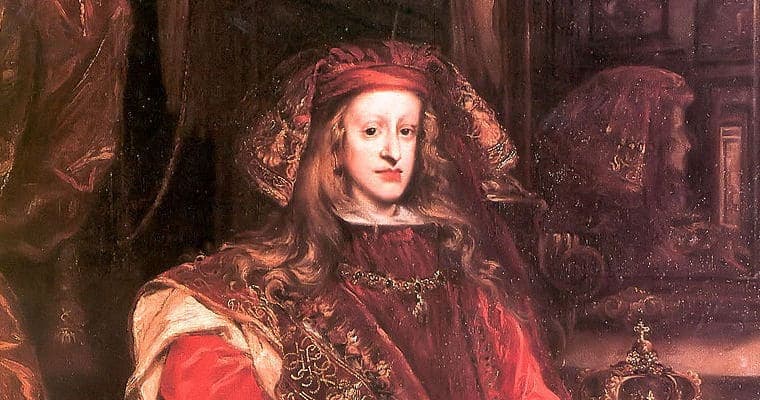Today, we think of marriage as something you do when you’re in love. But that’s actually a pretty new development. For much of history, marriage was more about securing wealth and power. Marriages were arranged by families to tie themselves to other families. You always wanted to marry your children to people with more status, not less. And it’s safe to say that few families in history have played the marriage game as well as the Hapsburgs. Starting with a single Swiss count, the Hapsburgs married themselves into positions of power until the family had put kings on the thrones of at least seven different countries.
Not bad, right? But of course, this success quickly became a problem. If you marry your way into the very top of royal power, who do you marry your children to once you get there? More importantly, what’s to stop another family from using clever marriage arrangements to replace you? And so the Hapsburgs, like many royal houses, came up with an effective- if sort of gross- solution: they would just marry each other. By marrying close relations, usually first or second cousins, the Hapsburgs ensured that their wealth and power stayed in the family.

Of course, you can really only marry cousins to each other for so long before nature starts to create some issues. You see, there’s a reason- besides the obvious fact that its sort of distasteful- that people try to avoid marrying their relatives. When people with closely related genes have children, it increases the odds of birth defects. And a few generations of inbreeding can lead to some really disturbing results. And the Hapsburgs were about to see exactly how devastating the results of inbreeding can be with the birth of Charles II, King of Spain.
Spain was one of the many countries that the Swizz Hapsburgs had managed to marry themselves into. And even for a family known for inbreeding, the Spanish line of the Hapsburgs was particularly inbred. In fact, all eight of Charles’ grandparents were descended from the same two people. And Charles’ father, Philip IV, and his mother, Mariana, were actually uncle and niece. As you can imagine, Charles had some wonky genes. For a start, his skull was slightly longer than it should have been. And his body was small and frail.

Charles also had an extreme case of what was often called the “Hapsburg Jaw.”Generations of inbreeding had left the Hapsburg’s with a common set of features, chief among them was a tendency for the lower jaw to stick out past the upper jaw. Charles II showed all of these Hapsburg features like a turned-down nose, a slightly flattened face, and most of all, a prodigious underbite. Based on his deformities, many people assumed that Charles would die. But Charles lived, and in many ways, his life turned out to be nature’s revenge on the Hapsburgs.

